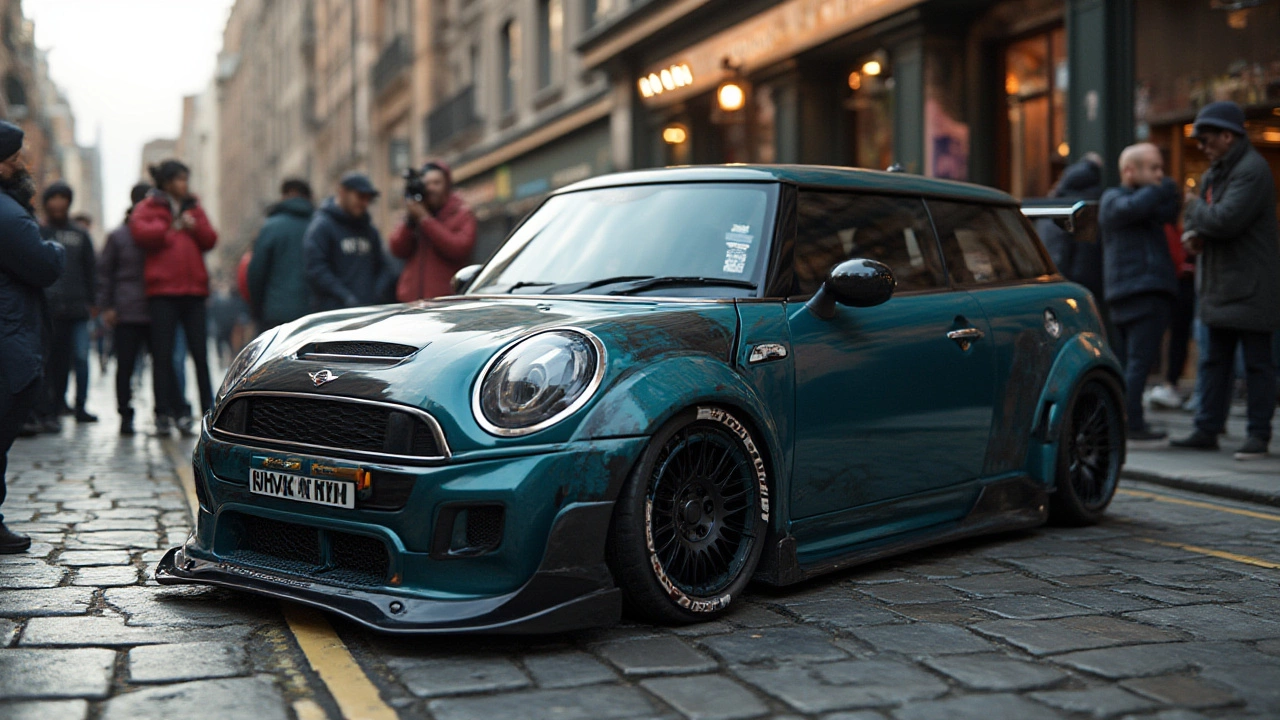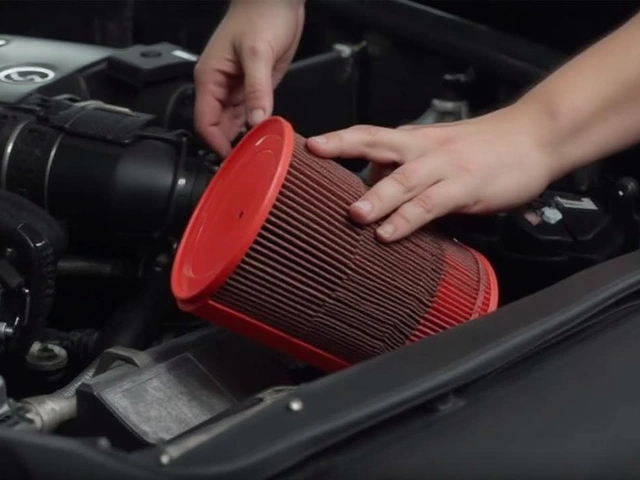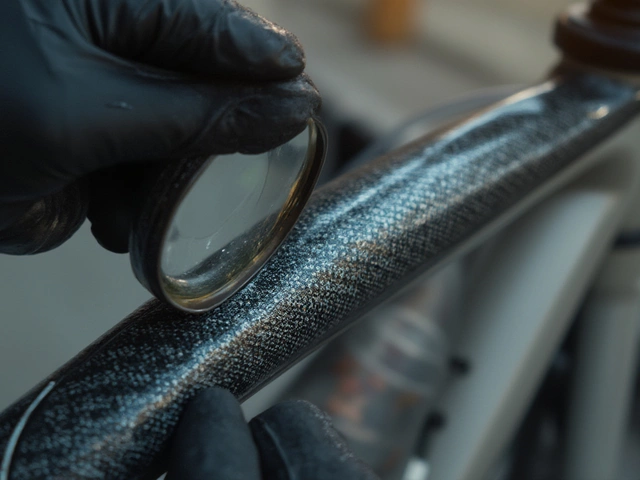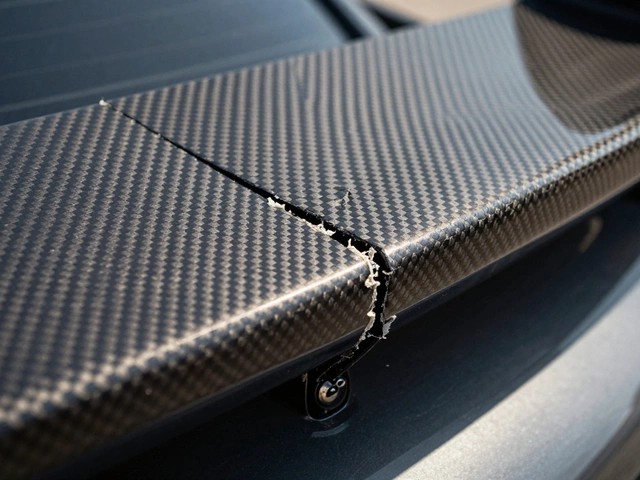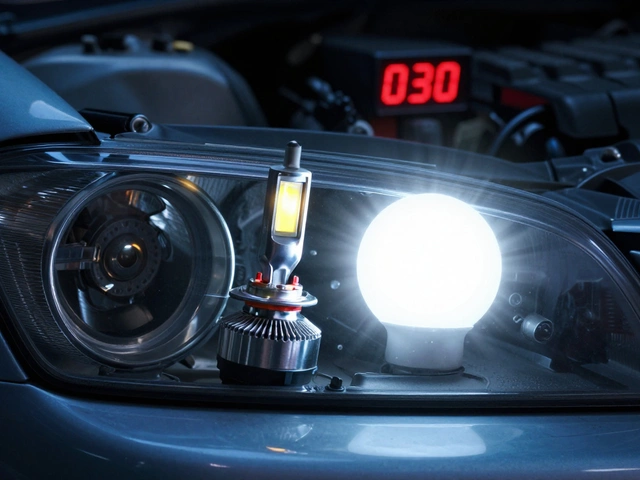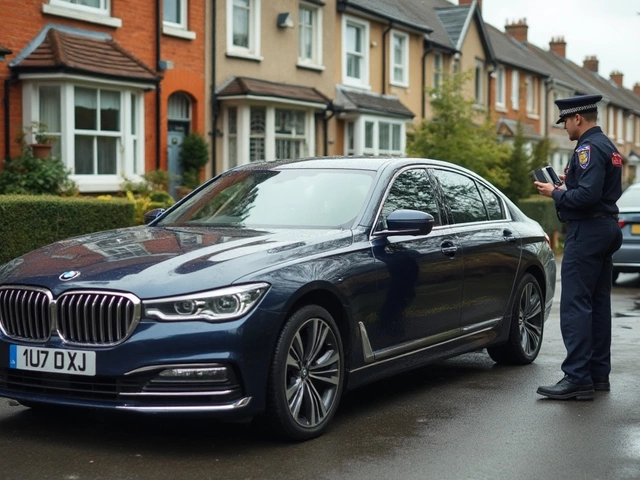If you’ve ever locked eyes with a car that turns heads, chances are it’s sporting a body kit. Not just for race cars or auto show queens anymore, body kits have morphed from niche upgrades to mainstream must-haves for folks who love making their ride unique. But what actually goes into a body kit? Is it just about flashy bumpers and lowered stances, or is there way more under the surface? Strap in, because there’s a lot to unpack. Body kits aren’t just about aesthetic swagger—they have roots in racing, where every curve and crevice is designed for a reason.
Main Components of a Body Kit
The first thing most people picture is a cartoonishly exaggerated front bumper and maybe a big spoiler. But a typical car body kit offers a deeper selection than that. At its core, most complete kits are built around these essentials:
- Front Bumper/Front Bumper Cover: The most recognizable piece. These aren’t just cosmetic—good aftermarket bumpers can alter airflow, protect factory parts, and make your car look miles different from stock.
- Rear Bumper/Rear Bumper Cover: Ties the look together. Performance-minded kits actually tweak aerodynamics, often helping with downforce.
- Side Skirts: These long panels run along the side of the car between the wheels, visually lowering your car and smoothing out turbulent airflow underneath.
- Fender Flares or Fenders: Sometimes included, these let you run wider wheels and tires—think classic tuner cars with deep-dish wheels tucked under chunky arches.
- Spoilers or Wings: Not every kit includes one, but for some, a bold spoiler is non-negotiable, especially for high-speed stability. There’s a reason race cars have ridiculous rear wings.
- Diffusers: Usually tacked onto the underside of the rear, a diffuser helps tidy up exiting air, reducing drag and improving grip at higher speeds.
- Canards and Splitters: Kits targeting serious enthusiasts might add these arrow-shaped bits and shelf-like splitters to the front bumper, helping to increase downforce or redirect airflow.
You don’t always need to buy the full suite. A lot of drivers mix and match, maybe just swapping in a spicy front bumper or adding subtle side skirts. Customization is half the fun. And here’s the twist: some body kits play mostly for looks, using ABS plastic or polyurethane to keep costs (and weight) low, while track-focused kits are often crafted from carbon fiber or fiberglass for lightness and brute strength. In 2023, about 27% of aftermarket body kits sold in the U.S. were carbon fiber—a material prized as much at SEMA shows as on the circuit.
Materials: How They Shape Performance and Looks
The choice of material in a body kit isn’t just about how it looks—it has a real impact on weight, durability, and installation. The three big names? ABS plastic, fiberglass, and carbon fiber.
ABS Plastic is the go-to for a lot of factory-style kits, especially for newer cars. Why? It’s flexible, absorbs small knocks, resists cracking, and fits snugly. Factory bumpers are usually ABS. It’s cheap, but you give up some race-ready strength and crisp finish that exotic materials provide.
Then there’s fiberglass, a staple in body kits for decades. It’s lightweight—a fiberglass car panel can weigh up to 30% less than the stock metal—but it can crack if you hit a curb. Good news: if you’re handy, fiberglass is repairable with a patch kit. The downside? Fit and finish isn’t always 100% perfect; expect some sanding and tweaking during install.
Finally, carbon fiber is the darling of performance shops and car YouTube channels for a reason. It’s strong, feather-light, and can actually knock seconds off lap times thanks to weight savings. It’s expensive—you’re often paying five-to-ten times more than for plastic or fiberglass. But it’s not indestructible; deep road rash or accidents can ruin the weave, and repairs are tricky. Still, no material has the wow factor of exposed carbon fiber under the sunlight at a cars & coffee meet.
| Material | Weight (kg per bumper) | Cost (USD, avg.) | Durability | Finish Quality |
|---|---|---|---|---|
| ABS Plastic | 5-7 | 200-500 | Excellent | High |
| Fiberglass | 2-4 | 150-400 | Fair | Medium |
| Carbon Fiber | 1-2 | 1000-2500 | Good | Excellent |
Another fun fact: the average cost for a full carbon fiber body kit in 2024 was about $11,000, not including labor. By comparison, a full ABS kit can come in under $2,000. Decide if you love the track, or just love the look—it’ll guide your wallet and your installation time.
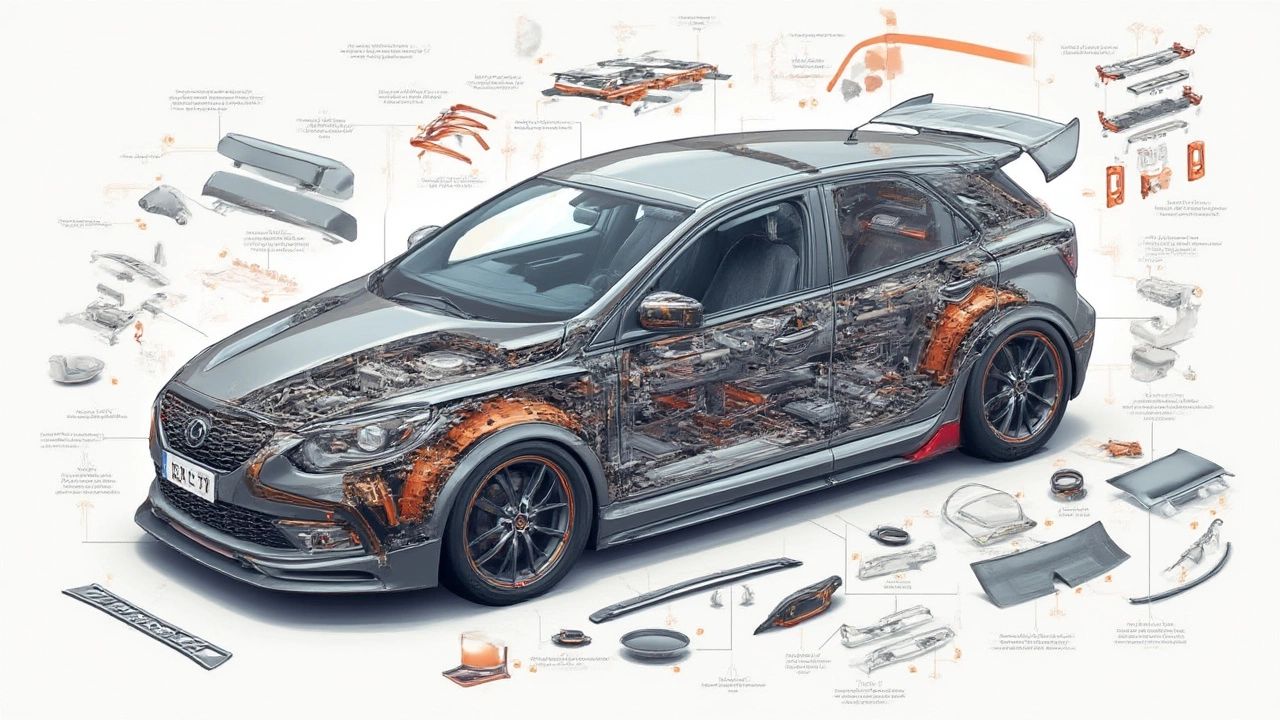
What Else Can You Add? Optional Extras in Body Kits
Basic body kits already make your car look miles sharper, but there’s a world of add-ons and extra tweaks. Once the main parts are on, most enthusiasts can’t leave things alone—and neither do the kit designers. Here’s what else you might find in a body kit box (or as tempting add-ons):
- Hood Scoops & Vents: Think of the Subaru WRX or classic muscle cars. Functional scoops channel cool air into the engine bay, while vented hoods let hot air escape. On street cars, plenty are just for visual punch—but hey, they work.
- Grille Inserts: Swap the plain plastic for honeycomb, mesh, or billet styles. These sound minor but can change the personality of the whole car, especially paired with a wild front bumper.
- Cowl Panels & Roof Spoilers: Love that rally look? Roof or tailgate spoilers are popular on hatchbacks and wagons, adding attitude while managing roofline turbulence.
- Widebody Extensions: For the bravest owners, a widebody kit means chopping up factory fenders so chunky extensions can bolt or blend in, allowing giant wheels and a menacing stance.
- Underbody Neon Kits: More common than ever post-2022, thanks to the retro Fast & Furious trend. Not technically part of the body, but many body styling shops now offer custom-fit neons.
- Badges and Decals: A lot of full kits even toss in badges, custom license plate frames, or unique emblems to complete the transformation.
It's a slippery slope. Once you start, it’s like tuning for both personality and performance. Small upgrades like a set of new headlight surrounds or mirror caps can match your kit and help that sense of unity.
One hot tip: If you’re mixing and matching, always check for compatibility. Brands like Rocket Bunny, Liberty Walk, and Veilside are sometimes only compatible within their own product lines. Piecing together parts from different brands or styles can lead to awkward fitment, so read reviews and owner forums first. No one wants a 2-inch gap where the side skirt meets the bumper.
Choosing, Installing, and Enjoying a Body Kit
Ready to join the kit life? First, decide if you’re after a tasteful OEM+ look or wild show car vibes. Do you want all-out performance, track and lap times, or something that just wows at the local car meet? Your answer changes everything.
If you’re new to body kits, buy the whole kit from a reputable brand, ideally with a good reputation for fitment on your exact make and model. Universal fit parts are tempting (and cheap), but custom-fit kits just look right and save heaps of headache. Don't forget about shipping costs—large kits can rack up hefty freight bills because of their size. According to data from 2023, some of the worst customer complaints in the U.S. body kit market were about shipping delays and damaged parts, so always check the return policy and inspect all items as soon as they arrive.
The install process comes next. Lots of body kits are advertised as "bolt-on," but in the real world, expect at least some trimming, sanding, or drilling. Fitment is key—fewer gaps mean a more professional, "factory" look. Here’s a typical step-by-step process once you unbox your shiny new kit:
- Test-fit every piece first to spot issues early, especially if you’ll paint before install. Lay the parts roughly on the car, checking gaps and clearances.
- Prepping surface areas matters. Remove old trim, badges, and sometimes even bumpers. Clean everything with alcohol-based cleaner so new parts stick or bolt properly.
- If the kit needs paint, now’s the time—most shops recommend professional spraying for color match and durability. Pro tip: Lay down at least two coats of primer and use a flexible paint if your kit is plastic-based.
- Install biggest pieces first (front and rear bumpers), then side skirts, finishing with accents like canards or spoilers.
- Tighten all fasteners evenly, and use rust-proof sealant if your climate is wet or salty, to prevent corrosion in hidden corners.
- Double check alignment—step back, check every angle, and adjust before calling it done. Crooked bumpers are easier to spot than you think.
- Take your newly kitted car for a short, slow test drive. Listen for rattles, odd noises, and check that nothing scrapes on speed bumps or parking lot ramps.
Painting and installation, depending on how complex the kit is, can run anywhere from $1,000 to $6,000 for labor alone at an experienced shop. Doing it yourself saves money, but factor in extra time and patience. If you’re using carbon fiber, have a pro install it—cracking or delaminating a $3,000 bumper hurts.
Once finished, get your ride aligned and check headlight/taillight visibility against local laws. U.S. states have different rules—low bumpers that obscure license plates or mess with pedestrian safety can earn tickets or fail inspection. Some body kits even have certification marks (like Germany’s TUV) if you want factory-grade paperwork.
The feeling you get when stepping back and seeing your car transformed is impossible to beat. Suddenly, your once-stock ride feels like yours—personal, unique, and ready for attention. You get the practical perks, too: improved aerodynamics, better cooling, or even better tire clearance if you pair it with new wheels. Just remember, quality components and a careful install go a long way toward getting the most out of your investment—both on the streets and at your next car meet.
If you need a quick cheat sheet, here’s a breakdown of the most typical components you’ll find in a complete body kit:
| Component | Main Function | Estimated Individual Cost (USD) |
|---|---|---|
| Front Bumper | Style, aerodynamics, frontal protection | 400-1,500 |
| Rear Bumper | Style, rear defense, downforce | 400-1,500 |
| Side Skirts | Visual unity, airflow, lowers stance | 250-700 |
| Spoiler/Wing | Downforce, stability at speed | 200-3,000 |
| Fender Flares | Wider wheels, aggression, stance | 300-1,200 |
| Diffuser | Rear airflow, reduced drag | 150-800 |
| Additional Accents | Details, branding, style extras | 50-500 |
So whether you're after pure street cred, improved aerodynamics, or that perfect jaw-dropping look, a complete body kit lets you send a message. Every piece speaks volumes about your car’s purpose, your personal style, and your attention to detail. The world of body kits is as much about art and self-expression as it is about engineering. Choose wisely, and enjoy every curve and contour of the transformation.

